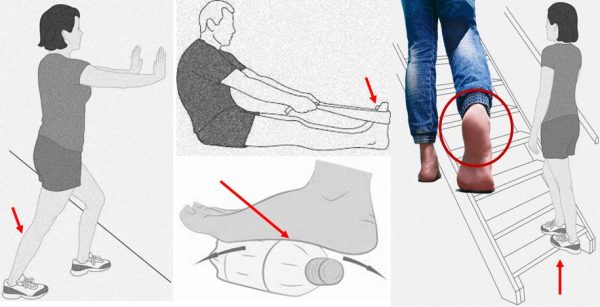
Heel And Ankle Pain – Reasons and Relief
One can feel pain in heel and ankle suddenly after a walk or exercise and it may not reduce for days together. There are many reasons for heel pain. It can be due to your shoe or tightened muscles or over working.
Sometimes the pain can be unbearable, and one can experience the pain after getting up from sleep or when getting up from sitting position. If the pain is not subsiding it is good idea to see a doctor.
Causes of heel and ankle pain
- Running
- Tightness of calf muscles
- Shoes with poor support
- Twist or turn of heel.
- Sudden change in activities
- Overstraining the heel
- Hard landing on heel
- Prolonged standing
- Obesity
- High arch of feet
What happens when you have heel pain?
- Bone spurs: Known as osteophytes are hard or smooth bums of extra bone that form at end of the bones. Spurs in ankle develop along edges of talus and tibia bones. Once formed heel spurs become permanent. With bone spur in ankle and heel, person will feel pain in ankle, back of heel and in calf area.
- Plantar fasciitis: Planta fascia is a band of tissue that runs in ball area of the heel. It supports foot arch. When planta fascia tissue disturbed it results in inflammation and swelling. Condition is called plantar fasciitis. In plantar fasciitis, pain will be between your foot arch and heel, pain feels worse when person start walking and better when resting. Finds it difficult to toes off the floor.
- Bursitis: Symptom is redness, swelling and pain in the heel. Bursae is a fluid filled sac that acts as cushion for tendons, bones, and muscles in joints. Whenever there is an inflammation in bursae it is called bursitis. One can experience bursitis in ankle joint, elbow, hip, and shoulder.
- Achilles tendinitis: Achilles tendon is the large tendon the connects calf muscle to heel bone. It is used for climbing, running, jumping, walking or to stand on toes. Overusing the Achilles tendon causes tendinitis. This leads to inflammation and pain in the tendon causing swelling in heel. Bone spur also leads to Achilles tendon.
When should you see the doctor? If pain is severe then, get an appointment to see the doctor. What are the pain levels and how it inhibits the activities?
- Severe pain is – pain is unbearable and is bad, heel pain keeps you awake, unable to use bathroom, dress, stand etc.
- Mild pain – pain comes and goes; pain annoys but manageable to walk.
- Moderate pain – constant pain, you are not able to sleep, you can manage to do housework and walk.
What can you do to reduce the pain?
- Raise and rest your heel on a pillow whenever you can.
- Place an ice pack for 10-15 mins every 2 to 3 hours.
- Perform gentle calf, ankle, feet stretch.
- Wear proper comfortable shoes, low or no heel shoes are better with a soft sole.
- Insert heel pads or soft insoles to protect heel.
- Use crape bandage to wrap around the heel.
- To reduce swelling and inflammation consider taking painkillers.
- Avoid walking in barefoot and reduce long walk.
- When getting up from bed and chair, keep your foot gently on the floor. Do not put too much weight on feet.
- Avoid standing longer hours.
- If your weight is more, then try to bring weight under control.
Exercises to reduce heel pain: Repeat these below set of exercises daily for 3-4 times.
- Calf stretching: By leaning forward against wall with one knee straight and heel on the ground, place the other leg in front with knee bent. Push hips toward the wall in controlled fashion and stretch calf muscle and heel cord. Hold for few seconds and repeat.
- Heel droop: Stand at edge of step or stair or on a raised platform. Place front half of foot on the stair and move your heel up and down while stretching arch of the foot. Avoid rapid movement, slowly stretch the calf muscle and arch of the foot.
- Lift big toe while keeping rest of the toes grounded.
- While sitting on a chair, slowly stretch the leg and move toes up and down while stretching the foot.
- Place a ball or can or bottle underneath the foot and while sitting or standing and roll the ball under the foot.
- Using a towel or strap stretch the feet towards you and release.
When to see the doctor?
- If heel pain is increasing and suffering is throughout the day
- Heel pain is not allowing to do normal activities and unable to sleep
- If pain is persistent for more than two weeks
- If any loss in sensation and there is tingling in the foot
- If you have preexisting condition like diabetes, arthritis
References:
https://www.nextsteportho.net/
Image credit: Image by freefeetpics from Pixabay (cc by 0) & https://orthoinfo.aaos.org/
Author: Sumana Rao | Posted on: February 13, 2023
« Tips to Stop Distracted Driving Do you know these Benefits of Salt ? »




















Write a comment